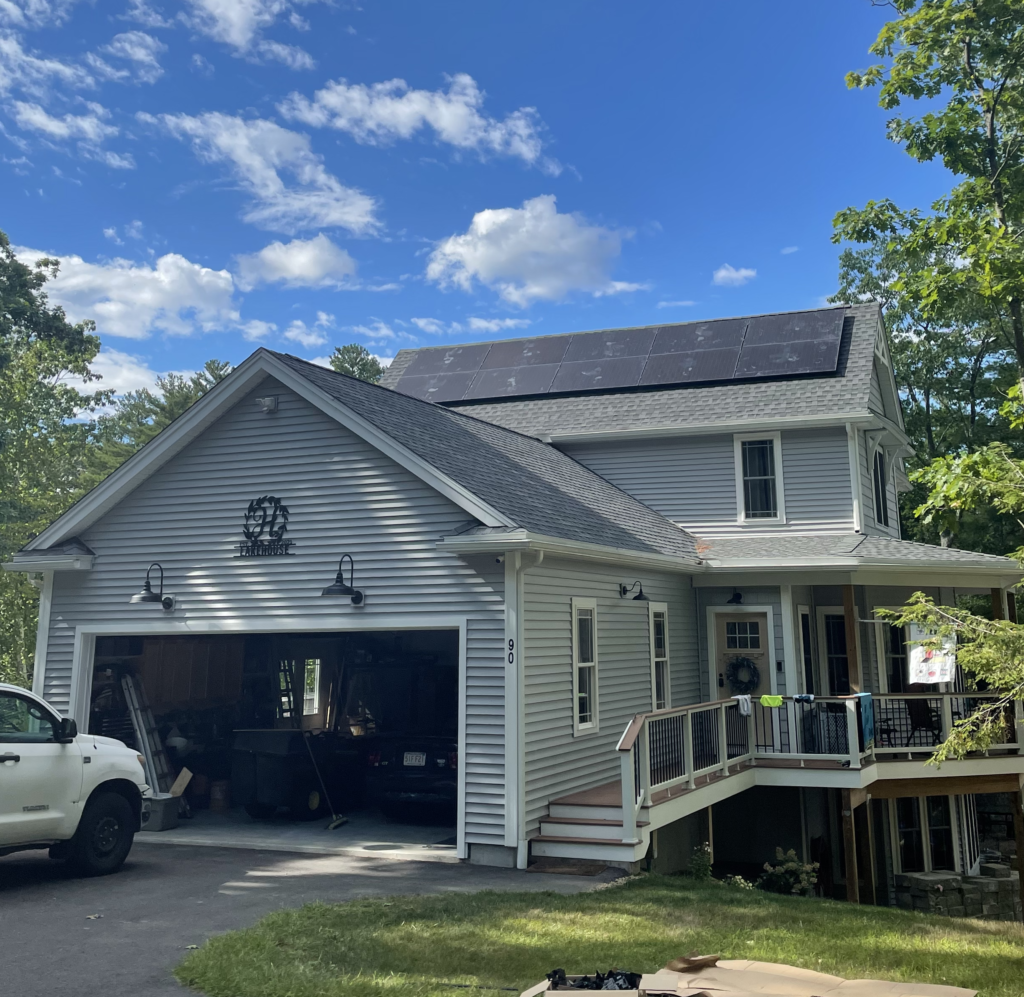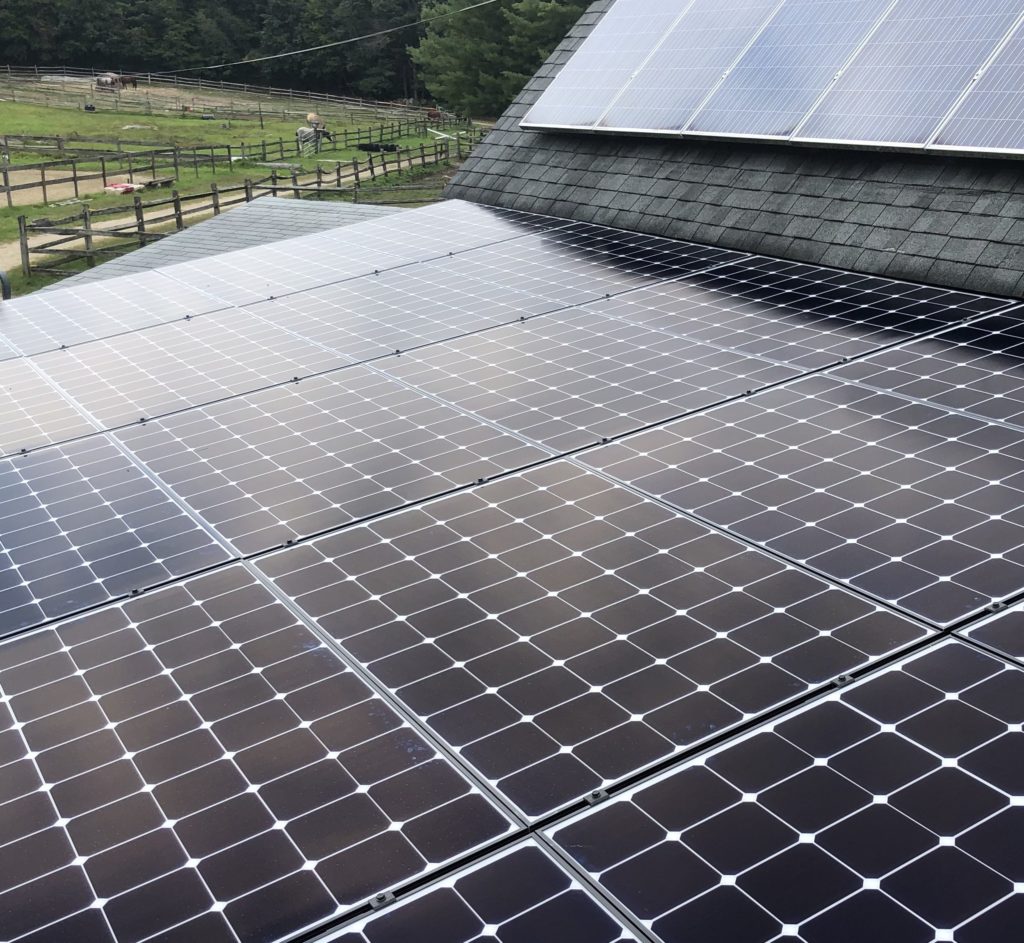How Many Solar Panels Do I Need?
So: you’ve decided you’re going solar and beginning the first few steps of your project. If you’re like most customers, you’re probably wanting the best panel with the best output efficiency, you’re just not sure what or how many solar panels you’ll need.
That’s what we’re here for! And while it seems complex, we’ll do all we can to make it simple.
To get you a number, our incredible solar sales consultants will first review your latest electric bill to determine the number of kilowatt-hours of electricity you use each year. Kilowatt-hours are the measure of the electric energy you use to run your home; meaning all of your lights, your refrigerator, air conditioner(s), phone chargers… you name it. They will also take into consideration the direction your roof faces in addition to the square footage of your roof space. From that we’ll have the basics necessary to “size” your system.

How Many Solar Panels Are Right For Your Home?
But of course, there is a bit more to it than that, so here are a few pointers to help you better understand the factors and process we’ll follow to how many solar panels your home needs.
There are three main factors that affect how much solar power you need: Your annual electricity usage, your solar panels wattage, and production ratios for your site. Let’s jump in.
Annual Electricity Usage
This is the amount of energy and electricity you use over the span of a year. As I stated earlier, this is measured using kilowatt-hours (kWh). In order to get the exact number, you’ll want to check out your utility bill and find out how much electricity you used over the last 12 months. The more electricity you use the more kilowatt-hours (kWh) you’ll need to cover.
The U.S Energy Information Administration (EIA) says that the average American household uses about 10,715 kWh of electricity per year. If you are thinking of adding more things in your home that use electricity (a heat pump, an electric car), then you’ll want to note that as well. But remember, even if you can’t cover 100% of your usage, you can still save big on what electricity load you can cover with solar. Saving money on 50% of your electricity needs is far better than zero.
Solar Panel Wattage
Once you know how much energy you need, factor two is a solar panels wattage, which is also known as a solar panels “power rating”. Most solar panels fall in the range of 250-400 watts of power per panel. That power rating can then tell us how much energy, or how many kilowatt-hours (kWh), the panel can produce under “ideal conditions”.
Production Ratios
But of course, most homes do not have ideal locations so we have a few more factors to consider.
To begin, where your home is located plays into how much energy a given watt of power can produce. If you live here in New England it’s going to be less than if your home was out in Arizona (think latitude and longitude). But more locally, there are issues related to your specific home. For example, does your roof face something other than south? East and West are good, but the energy production you get will be less than it would if it faced South. 
Then what is the pitch or angle of the roof? In the winter the sun is lower in the sky, but even in the summer it doesn’t spend much time straight above so pitch is important. And of course there is shading. Shade can be caused by trees, a chimney, stink pipes, or perhaps another part of your building. A good system can have a number of these “less than ideal” factors, but if you have a lot of them all together it can make for a less than ideal situation. Lastly, there is the simple matter of how many panels will fit in your available space.
How We Make an Assessment
To get you the best possible model of how a system might work for you, we do an initial analysis remotely using a web-based design tool that uses satellite imagery. The satellite images are then augmented by LIDAR. LIDAR, which stands for Light Detection and Ranging, is a remote sensing method that uses light in the form of a pulsed laser to measure ranges (variable distances) to the Earth. LIDAR thus helps us accurately determine the dimensions of your home and other buildings as well as tree size and height.
Thus armed with a very accurate model of your home and property, we then design a solar system for your roof which is used to calculate how much power (or kWh) the designed system will produce for you each year. Therefore replacing all or a good share of the kWh you’re currently buying from the utility. Since you own the system, it is power you will not have to pay for saving you money for the next 25 plus years.
But We Want Our Measurements to be Right
If that all looks good to you, our plan is close to complete, but the job is not yet done. Before the plan is all final, your consultant will travel to your home or site and gather physical measurements of the roof(s) and rafters (for our engineers). In some cases we may even use a tool to do an on-site “shade reading” to double check what was modeled in our design tool. As they say, measure twice and cut just once.
How To Get Your Number of Panels
Whether you’re ready for solar or not, just give us a call at 877-886-8867 and we will set you up with a free consultation to figure out how many panels your home will really need. And if you want a quicker estimate don’t hesitate to use our instant ballpark estimate with our self-assessment solar cost tool to get an estimated cost of your system. It’ll be a start, but as noted above, there is just a “bit more” to it before we can get started.
If you liked this article, you may also like:
5 Benefits of the Inflation Reduction Act for Solar
How Your Home With Solar Panels Can Charge Your EV
The Perfect Storm Driving Up the Price of Solar Panels





No comments yet. You should be kind and add one!
The comments are closed.